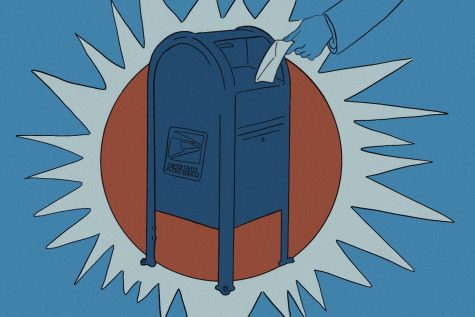Voting 101: A guide to demystify the voting process this midterm election
November 3, 2022

With the midterm elections coming up on Nov. 8, it’s time to fill out mail-in ballots, or if you are voting in-person, find out where your polling place is.
If you do not know where to start in the voting process, the Chronicle is here to help. Voting can be simple and accessible if you prepare, taking the time to plan out how you are going to vote and who you are going to vote for.
Voter guides make it easy for voters to learn the candidates’ views on specific topics. Chicago Votes is a nonpartisan and nonprofit organization that encourages youth voting and offers a voter guide on their website in four different languages, including information on those running for governor, attorney general and secretary of state in Illinois.
When choosing the questions for the voter guide, Katrina Phidd, communications director at Chicago Votes, said Chicago Votes is focused on a few issues that are on the minds of young voters.
Phidd said these issues include abortion rights, the environment, voting rights and guns and public safety.
Chicago Votes’ voter guide also includes important information on judges.
“Our voter guide flags judges that have been reported or have had concerning practices in the courtroom,” Phidd said.
Phidd encourages people to choose a voter guide that speaks to them and aligns with their values. Examples of other guides include the Illinois Voter Guide and this resource from WTTW.
Sharon Bloyd-Peshkin, professor of journalism in the Communication Department and creator of Columbia Votes, said another way to prepare to vote is to see your ballot prior to election day on Ballotpedia’s website.
Bloyd-Peshkin said she encourages voters to fill out a sample ballot prior to voting and bring it on Election Day to copy from.
Both Phidd and Bloyd-Peshkin encouraged bringing election information inside the polling booth: for example, a filled–out sample ballot or a voter guide.
Bloyd-Peshkin said if the sea of names on the ballot stresses you out, do not to worry, as voters do not have to vote for every race on the ballot for it to be valid.
If you are voting out of state, Phidd encourages you to check your local board of elections website to know deadlines. USA.gov connects voters to their local board of elections.
Phidd offered advice if you are mail-in voting in Illinois but do not want to put your ballot in the mailbox.
“There’s a number of drop boxes throughout the city, including early voting locations, where you can physically drop off your ballot. But if you are going to mail it in, it just needs to be postmarked by Nov. 8,” Phidd said.
Bloyd-Peshkin said if all else fails with voting in your home state, “just vote in Illinois, because the window for requesting absentee ballots and mailing-in ballots is almost closed.”
“You can show up on Election Day and register and vote a provisional ballot in Illinois on Election Day,” Bloyd-Peshkin said. “Don’t give up your right to vote.”
For same-day registration, you need two forms of identification, one that has your photo on it and one that has your current address on it. A Columbia student ID or a transcript are examples of IDs that are accepted.
For this election, Phidd said many of the polling places and precincts have changed.
“If you’re used to voting at your neighborhood elementary school, it might not be that same polling place,” said Phidd. “So I would really recommend before you go out to vote, to go to the Chicagoelections.gov website and type in your address and confirm your polling location.”
Phidd said polling locations close the voting line at 7 p.m.
“If you’re in line to vote before 7 p.m., and you’re still in line waiting and 7 p.m. has passed, you still have the right to vote,” Phidd said. “Stay in line; they cannot kick you out, and they cannot tell you the polling place is closed.”
Phidd said this midterm election has a “profound effect” on Illinois residents, especially regarding the race for governor.
“[Governors] set the priorities for the state,” Phidd said. “They have veto power over legislation and control what laws get passed and how much money is allocated to different things in the state.”
Bloyd-Peshkin said the people on Illinois’ ballot this November will affect voters in many different ways.
“The positions being voted on affect our lives, down to school boards and library boards who have a say in what’s taught in classrooms, what books are not permitted to be in libraries,” Bloyd-Peshkin said. “I think presidential elections are more high profile. And people don’t realize that, actually, these other elections are going to have a much more profound impact on their lives and the lives of the people in their communities.”







